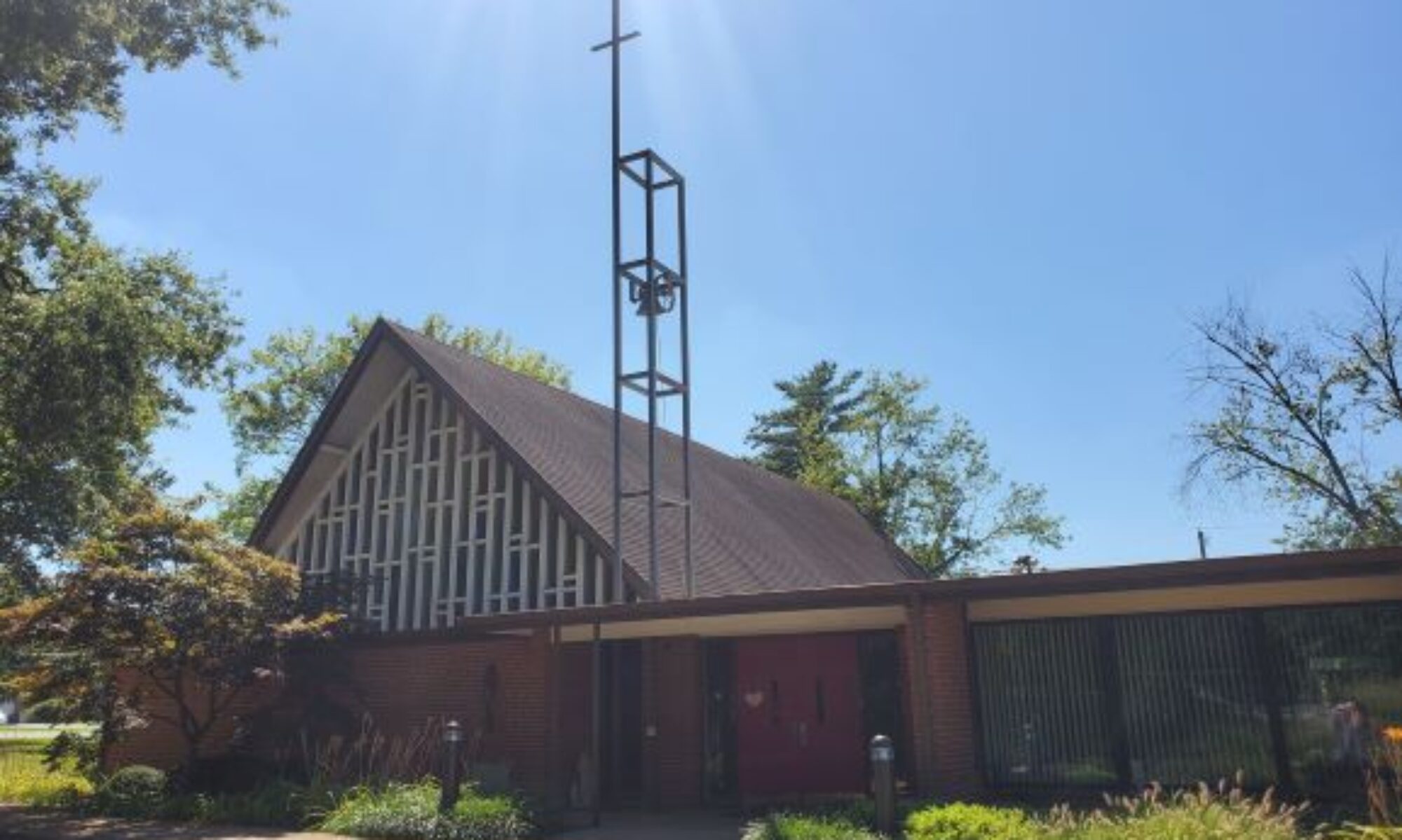The Episcopal Church follows a liturgical form of worship. For much of the history of the Anglican Communion, the liturgy of the Church was found in the Book of Common Prayer. The first BCP was compiled in 1549 by Thomas Cranmer, Archbishop of Canterbury. Since then the Prayer Book has been revised in the various Churches of the Communion. The current American BCP is the 1979 revision, although we use liturgical materials approved for use since that date.
Liturgical forms of worship follow set, even printed, patterns. In this way, all worshipers know what to expect and participate equally. The Episcopal Church teaches that all persons have a role to play in the worship of the Church. A familiar liturgy helps facilitate that participation.
Holy Eucharist
The Prayer Book assigns Holy Eucharist as the principal act of Christian worship on Sundays and major feasts days (BCP, p. 13). In the service of Eucharist, we God blesses bread and wine to be for us the Body and Blood of Christ, “the food and drink of new and unending life in him.” The service of Eucharist has two major parts: The Word of God and the Holy Communion.
the principal act of Christian worship on Sundays and major feasts days (BCP, p. 13). In the service of Eucharist, we God blesses bread and wine to be for us the Body and Blood of Christ, “the food and drink of new and unending life in him.” The service of Eucharist has two major parts: The Word of God and the Holy Communion.
The Word of God
The liturgy of the word focuses on a series of readings from the Bible. The Episcopal Church uses a lectionary, a set of readings assigned for the Sundays of the Church year. Currently, the Episcopal Church uses the Revised Common Lectionary. The RCL assigns major portions of the Scriptures to be read in a three year cycle. Every Sunday, we read a lesson from the Old Testament (on the Sundays of the Easter Season, a reading from the Acts of the Apostles is substituted), a portion of the Psalms, a lesson from the Acts or Epistles of the Apostles, and a lesson from one of the four Gospels (Matthew in Year A, Mark in Year B, and Luke in Year C; lessons from John are read during particular seasons in each of the three years).
After the readings from Scripture, someone (usually the rector) preaches a sermon, which reflects on the readings. The preacher seeks to illuminate what God is saying to this particular community at this moment in its history. The sermon seeks to connect the life of the community to the larger narrative of God’s saving history.
The sermon is followed by a recitation of the Nicene Creed, a prayer that, along with the Apostles’ Creed, unites much of Christianity. Then follow the Prayers of the People, in which the people pray for the needs of the Church and the world as revealed in the readings and scripture. After the Prayers, the people unite in a General Confession, confessing the Church’s and their own shortcomings in living out God’s purposes in the world. This is followed by the pronouncement of absolution by the priest and the exchange of peace, which signifies the restoration of those relationships broken by sin.
The Offertory
At the center of the eucharistic liturgy is the Offertory. After seeking God’s revelation in Scripture and the life of the community, the community offers its common life to God. A money offering is collected. This money serves as a sign of the whole of our lives, and the various economies in which we live. Bread and wine are presented at the Altar, along with a food offering for the local food pantry and the money collected. The bread and wine serve as the preeminent sign of our common life being offered to God and joined to Christ’s sacrifice.
The Holy Communion
The liturgy of the table continues after the Offertory with the recitation, by the presiding priest (or bishop), of the Great Thanksgiving. The Great Thankgiving (or Eucharistic Prayer) recites the history of God’s saving acts, focusing especially on the Incarnation, life, death and resurrection of Jesus Christ. The recitation begins with creation and continues up to the present gathering. During the prayer, we invoke the Holy Spirit to sanctify the bread and wine to be the Body and Blood of Jesus and to sanctify us to be the Body of Christ given for the world. After this blessing, all come forward to receive the bread and wine. Through this act of communion, we are bound together in one Body, drawn into the divine life and sent into the world strengthened for ministry.
Music
Congregational singing of hymns and psalms is an important part of the liturgy of the Church. Singing unites many voices into one. The texts of the hymns for a given Sunday are chosen in reference to the scriptural readings. The hymns help interpret the readings, and often work at a much more emotional level than does the sermon. Some parts of the liturgy are sung a cappella. Again, these chants help unite the many voices of the congregation into a single voice of praise.

